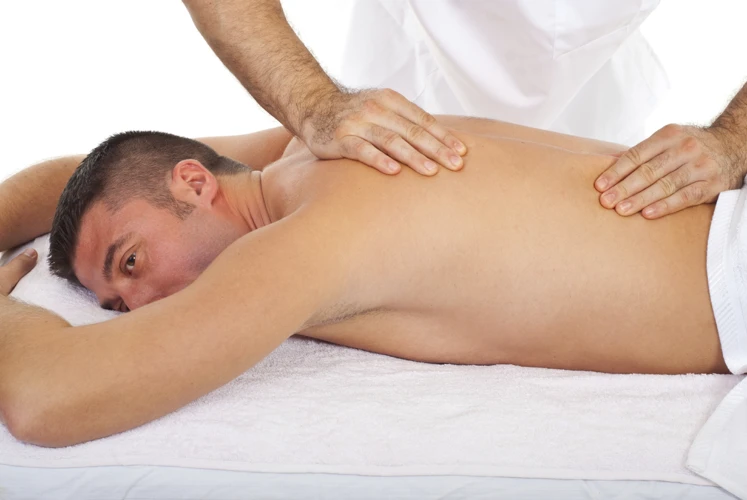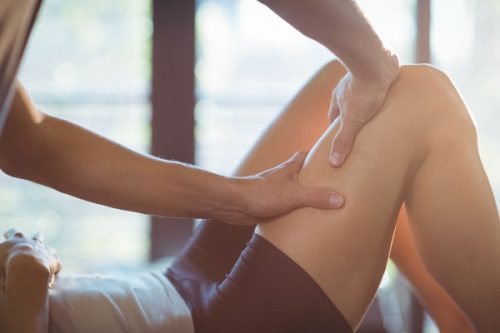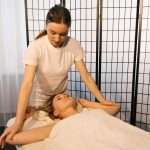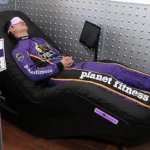Feeling sore after a tough workout? That lingering ache in your muscles might be caused by lactic acid buildup—a common byproduct of intense exercise. The good news? You can use massage to help flush out lactic acid, ease soreness, and speed up recovery. In this guide, we’ll show you how to massage lactic acid out of your muscles using simple, effective techniques. Whether you’re an athlete or just getting back into fitness, these methods can help reduce pain, boost flexibility, and get you moving comfortably again.
Table of Contents
Massage Lactic Acid to Boost Recovery: Key Benefits

Massaging lactic acid out of your muscles offers a range of recovery and performance benefits—especially after intense physical activity. By encouraging circulation and reducing muscle tension, you can speed up healing and get back to your routine faster. Here are the top benefits of using massage to reduce lactic acid buildup:
✅ Less Muscle Soreness
When you massage lactic acid out of overworked muscles, it helps ease post-workout soreness and discomfort. This accelerates your recovery so you can train again sooner—with less pain.
✅ Better Blood Flow
Massage boosts circulation, helping your body flush out lactic acid more efficiently. Improved blood flow delivers oxygen and nutrients to your muscles, supporting faster repair and overall muscle health.
✅ Reduced Inflammation
Targeted massage reduces swelling and inflammation by stimulating the lymphatic system. This can ease pain, improve mobility, and reduce the risk of future strain.
✅ Greater Flexibility
By working tension out of tight muscles, massage can improve flexibility and your range of motion. This not only enhances performance but helps protect you from injury.
✅ Faster Recovery Times
Regularly using massage to remove lactic acid helps shorten downtime after workouts. This keeps you moving, training, or competing without extended rest periods.
💡 Tip: Massaging lactic acid out of your legs—especially the quads, calves, and hamstrings—can be particularly effective for runners, cyclists, and weightlifters. It improves circulation, reduces muscle tension, and boosts lower-body recovery.
🛠️ Preparing to Massage Lactic Acid Out of Your Muscles

Before you begin, proper preparation ensures your massage is both effective and comfortable. Follow these essential steps to get the most out of your massage lactic acid session:
| Step | What to Do |
|---|---|
| 1. Choose a Massage Type | Pick the right technique for your needs—Swedish for relaxation, deep tissue for targeting soreness, or sports massage for post-workout recovery. Each style supports different aspects of flushing lactic acid from your muscles. |
| 2. Select a Massage Oil | Choose a massage oil that provides smooth glide and skin nourishment. Look for oils with anti-inflammatory properties like arnica, eucalyptus, or peppermint for added recovery benefits. |
| 3. Position Yourself Comfortably | Lie face-up or face-down depending on the area to be treated. Ensure your body is relaxed and the massage table is adjusted to the right height for the therapist or your self-massage setup. |
| 4. Communicate with Your Therapist | Always let your therapist know about any injuries, medical conditions, or sensitivities beforehand. Clear communication ensures the massage is tailored safely to your body. |
💡 If you’re doing self-massage at home, create a calm space, use a foam roller or massage gun, and follow the techniques in the next section for best results.
How to Massage Lactic Acid Out of Your Muscles: Step-by-Step

Follow these simple yet effective steps to flush out lactic acid and ease post-workout soreness:
🔥 1. Warm Up First
Before you begin to massage lactic acid out of your muscles, do a gentle warm-up or some light stretching. This boosts blood flow, relaxes the tissues, and makes the massage more effective.
🔧 2. Use a Massage Tool (Optional but Helpful)
Foam rollers, massage sticks, massage balls, or percussion guns like the TOLOCO Massage Gun can help apply consistent pressure and reach deeper tissues. These tools make it easier to massage lactic acid out of sore or tight muscles without tiring your hands.
🖐️ 3. Start with Light Pressure
Begin with gentle strokes to help your muscles adapt. Slowly glide your hand or tool over the sore area to prepare the tissues for deeper work.
🔄 4. Massage in Circular Motions
Use small, circular movements to stimulate blood flow and target areas where lactic acid may have built up. This motion helps move the acid out of the muscle tissue and toward your lymphatic system for removal.
🎯 5. Focus on Target Muscles
After warming up, zero in on specific muscle groups—like the quads, calves, hamstrings, glutes, shoulders, or back. Massage each area for 1–3 minutes, depending on soreness and tightness.
💪 6. Apply More Pressure Gradually
As the muscles relax, you can increase the pressure to break down deeper tension and help release trapped lactic acid. Use slow, deliberate motion to avoid injury.
🧼 7. Use Long, Flowing Strokes
Long, sweeping strokes help stimulate circulation and guide lactic acid out of the muscle fibers. Always move in the direction of muscle fibers—typically toward the heart.
📈 8. Increase Pressure Mindfully
If tolerated, deepen the pressure gradually. Don’t push through sharp pain—firm discomfort is okay, but sharpness is a red flag.
⏱️ 9. Massage for Several Minutes
Spend at least 5–10 minutes per major muscle group. Longer sessions can help fully massage lactic acid out of fatigued areas, especially after intense workouts.
🔁 10. Rinse and Repeat as Needed
If soreness persists, repeat the massage later in the day or the next morning. Drink plenty of water post-massage to help flush toxins and support recovery.
💡 Ready to Recover Smarter?
Don’t let sore muscles slow you down. Start using massage to flush out lactic acid, boost circulation, and feel better faster. Whether you’re using a foam roller, massage gun, or just your hands, the right technique makes all the difference.
👉 Explore our top-rated massage guns under $100 for effective lactic acid relief at home—perfect for post-workout recovery!
How to Massage Lactic Acid Out of Your Legs
Your legs often bear the brunt of intense exercise, making them a common site for lactic acid buildup. Here’s how to target key leg muscles for relief and faster recovery:
🔥 1. Warm Up the Leg Muscles
Begin with light stretching or dynamic movement to increase blood flow to the quads, hamstrings, glutes, and calves. This primes the muscles for massage and reduces discomfort.
🔧 2. Choose the Right Tool
Use a foam roller, massage stick, massage gun, or even a tennis ball to reach deep into the leg muscles. Tools allow for more control and pressure without straining your hands.
🖐️ 3. Start with Gentle Pressure
Begin lightly, especially if your legs are extremely sore. Gently roll or stroke the affected muscles to ease tension before applying deeper pressure.
🔄 4. Use Circular Motions to Break Up Lactic Acid
Massage in slow, circular motions over sore spots. This encourages circulation and helps disperse pockets of lactic acid from the muscle tissue.
🎯 5. Focus on Key Areas
Target your quads, hamstrings, calves, and glutes. These large muscle groups are often tight and benefit the most from massage after activity.
💪 6. Add Pressure as Needed
Once the tissue begins to relax, increase the intensity to reach deeper layers and break down built-up acid. Use your tool slowly and stay within your pain tolerance.
🧼 7. Use Long Strokes Along Muscle Fibers
Apply long, sweeping strokes up the leg—always in the direction of blood flow. This helps drain lactic acid and other waste through the lymphatic system.
📈 8. Gradually Deepen the Massage
If your muscles can handle it, go deeper to release remaining tension. Stay mindful of sharp or stabbing pain—discomfort is okay, but pain is not.
⏱️ 9. Massage Each Leg for 5–10 Minutes
Take your time. A few focused minutes per leg can significantly reduce soreness and enhance recovery.
🔁 10. Repeat as Needed
Massage daily after workouts or whenever soreness appears. Don’t forget to rehydrate—water is essential for flushing lactic acid from the body.
❓ Frequently Asked Questions
❓ What types of massage are best to massage lactic acid out of muscles?
The most effective techniques include:
- Swedish Massage: Light, flowing strokes boost circulation and promote relaxation.
- Deep Tissue Massage: Firm pressure targets deeper muscle layers to release trapped lactic acid.
- Trigger Point Therapy: Focuses on muscle knots where lactic acid can accumulate.
- Myofascial Release: Gently stretches tight connective tissue, helping disperse lactic acid.
- Sports Massage: Tailored for athletic recovery and performance, ideal post-workout.
❓ How often should I massage lactic acid out of my muscles?
- Immediately after exercise: Helps reduce soreness and prevent stiffness.
- Daily (5–10 minutes): Maintains healthy circulation and minimizes acid buildup.
- Weekly full-body sessions: A great recovery habit for active individuals.
❓ What techniques help reduce lactic acid pain the most?
- Kneading and circular strokes: Help break down lactic acid in muscle tissue.
- Foam rolling and massage guns: Allow for consistent, targeted pressure.
- Stretching before and after: Improves mobility and aids in flushing acid.
- Heat or ice therapy: Can reduce inflammation and ease soreness.
❓ Are there any precautions when using massage to reduce lactic acid?
Yes. Follow these safety tips:
- Start gently: Don’t apply heavy pressure right away.
- Listen to your body: Stop if the pain feels sharp or intense.
- Stay hydrated: Drink water before and after massage to support detox.
- Use proper form: Always massage in the direction of muscle fibers.
❓ What can I do to make massage lactic acid relief more effective?
- ✅ Apply steady pressure and gradually increase intensity
- ✅ Use recovery tools like foam rollers or massage guns
- ✅ Stay consistent—regular massage prevents buildup
- ✅ Stretch and hydrate before and after
- ✅ Combine with rest, nutrition, and sleep for faster muscle repair
🔗 Related Articles
🌀 Why Do I Feel Sick After a Massage?
Explore what causes post-massage nausea or lightheadedness and how it’s connected to circulation and detox.
💨 Why Do I Burp After a Massage?
Discover how massage can trigger digestive responses like burping, and what that means for your body.
💪 How to Massage a Pulled Muscle
Learn how to safely massage sore or strained muscles—ideal if you’re also dealing with lactic acid buildup.
Final Thoughts
Massaging lactic acid out of your muscles is one of the most effective ways to ease post-workout soreness, improve flexibility, and speed up recovery. Whether you’re using simple hand techniques, foam rollers, or massage tools, taking the time to care for your muscles can make a big difference in how you feel—and how you perform.
By incorporating regular massage into your recovery routine, you can reduce inflammation, increase blood flow, and keep your body moving freely. Just remember to start gently, stay hydrated, and listen to your body.
If you’re serious about recovery, it’s time to make massage lactic acid relief part of your fitness lifestyle.
📚 References
- Mayo Clinic: Lactic Acidosis
- National Center for Biotechnology Information: The Benefits of Massage for Sports Injury
- MedlinePlus: Massage Therapy
⚠️ Disclaimer:
This article is for informational purposes only and does not constitute medical advice. Always consult with a licensed healthcare provider or certified massage therapist before beginning any new treatment, especially if you have pre-existing health conditions or concerns.











